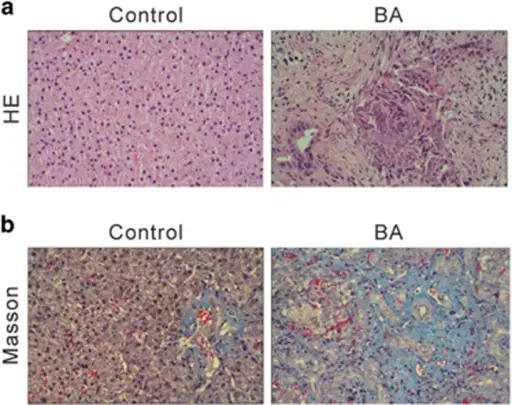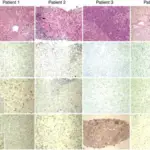Biliary atresia is a condition in infants in which the bile ducts outside and inside the liver are scarred and blocked.
What is the Pathology of Biliary Atresia?
The pathology of biliary atresia is:
-Etiology: The cause of biliary atresia is not clear, but could be due to inflammation of and scarring caused by problems with the immune system.
-Genes involved: None.
-Pathogenesis: The sequence of events that lead to biliary atresia includes obliteration or discontinuity of the extrahepatic biliary system, resulting in obstruction of bile flow.
-Histology: The histology associated with biliary atresia shows lobular cholestasis, portal neutrophilic infiltrate, bile ductular proliferation (peaks at 200 days), with elongated and angulated ductules and occasional bile plugs.
How does Biliary Atresia Present?
Patients with biliary atresia typically affect females (girls) present at the age range of 2-15. The symptoms, features, and clinical findings associated with biliary atresia include light beige stools, dark brown urine, swollen belly, difficulty gaining weight, ascites, and liver failure after several months if the biliary atresia is not treated.
How is Biliary Atresia Diagnosed?
Biliary atresia is diagnosed using CBC, liver biopsy, and ultrasound.
How is Biliary Atresia Treated?
Biliary atresia is treated using the Kasai surgical procedure.
What is the Prognosis of Biliary Atresia?
The prognosis of biliary atresia is fair.



